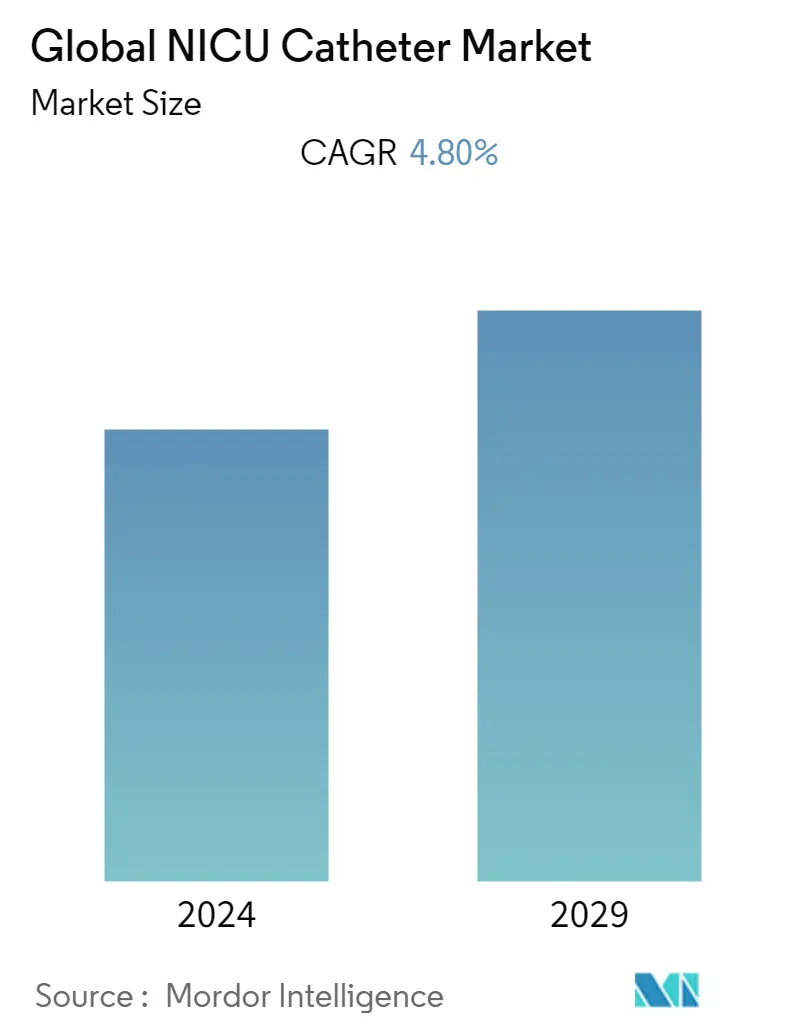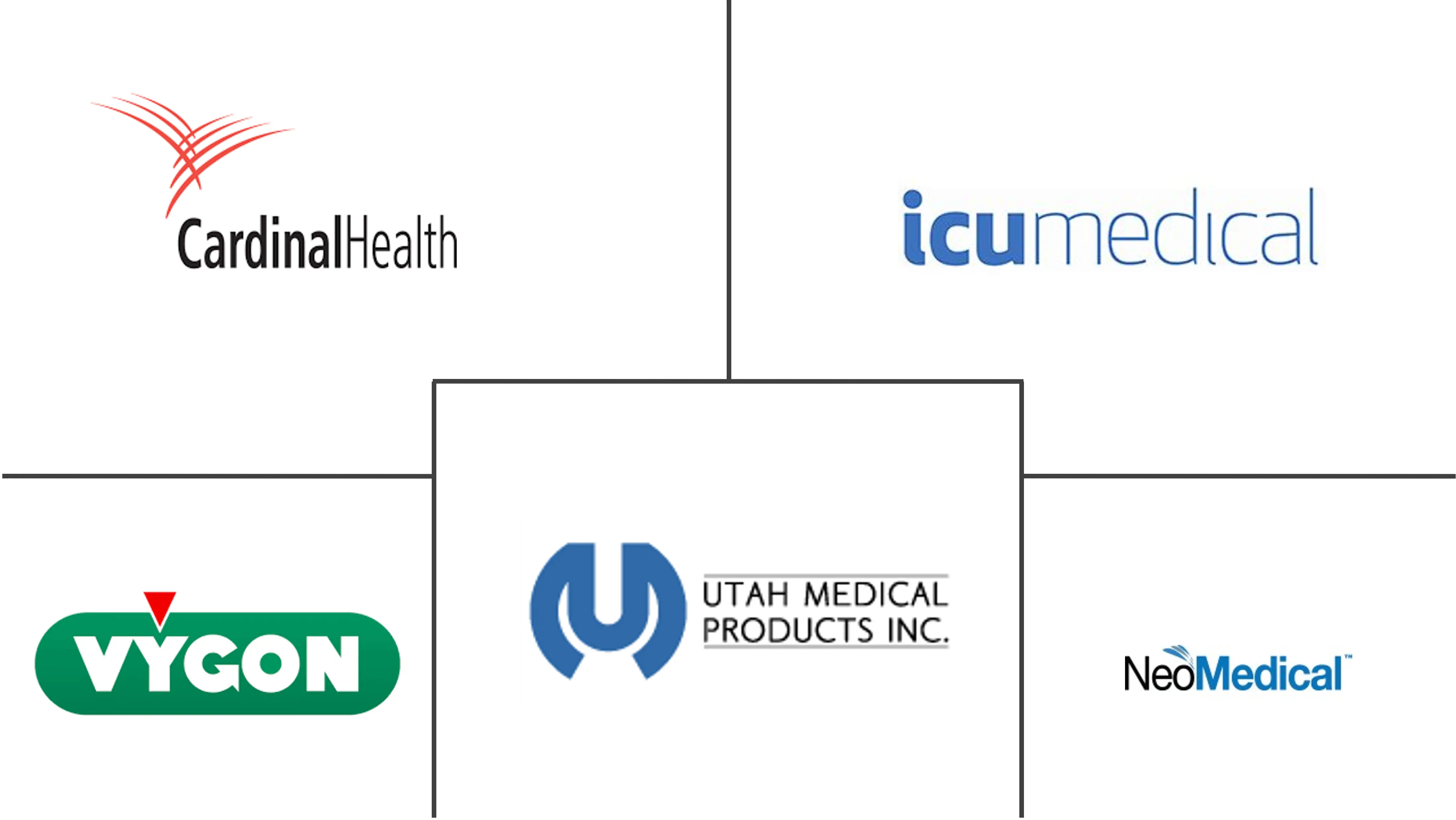Market Size of Global NICU Catheter Industry

| Study Period | 2019 - 2029 |
| Base Year For Estimation | 2023 |
| CAGR | 4.80 % |
| Fastest Growing Market | Asia-Pacific |
| Largest Market | North America |
| Market Concentration | Medium |
Major Players
*Disclaimer: Major Players sorted in no particular order |
Need a report that reflects how COVID-19 has impacted this market and its growth?
NICU Catheter Market Analysis
The NICU catheter market is projected to register a CAGR of 4.8% during the forecast period (2022-2027).
During the rapidly evolving pandemic of COVID-19 infection in 2020-2021, pregnant women and their newborn infants with confirmed or suspected COVID-19 infections formed a special vulnerable group. They required immediate attention during the pandemic, such as resources for prevention of transmission, diagnosis of infection, and providing clinical care during labor, resuscitation, and postnatal period. Majorly procedures included endotracheal intubation, minimally invasive surfactant therapy (MIST), and umbilical catheter insertion. Also, some babies require continuous blood pressure (BP) monitoring which can be performed using a catheter in one of the baby's arteries. For instance, according to the Chinese Center for Disease Control and Prevention, 1,321 children tested positive for COVID-19 during the initial phase of the pandemic in 2020 in China. Out of which 18.1 % were less than one year of age. The neonates admitted to the neonatal intensive care unit (NICU) were critically ill from the SARS-CoV-2 infection and suffered from fever and poor feeding, thereby raising the demand for NICU catheters and contributing to the market growth.
Further, researchers found that neonates and young infants who tested positive for SARS-CoV-2 are more likely to develop sepsis-like syndrome (SLS). As per the research article published by National Center for Biotechnology Information (NCBI) in February 2021, a study was conducted in Hamad General Hospital (HGH), The State of Qatar, which included infants less than 8 weeks of age admitted with SLS between 1st April 2020 and 1st July 2020. They are tested for COVID-19 and found that around 40% of infants are COVID-19 positive. Neonatal sepsis is a major health problem that causes serious morbidity and mortality.
Hence, due to the above-mentioned reasons, the NICU catheter industry gained immense opportunities from the pandemic in neonatal coronavirus infection management, and currently, they are in extensive demand across all the regions.
The prevalence of premature deliveries is rising every year across the world. Premature birth is called when a baby is born before the completed 37 weeks of gestation. According to the Centers for Disease Control and Prevention (CDC), in the United States, the premature birth rate has been on an upward trajectory consistently, with 2019 being the fifth consecutive year in a row that the preterm rate increased. According to the World Health Organization (WHO), an estimated 15 million babies are born preterm every year, and this number is rising. Though there are no certain factors for preterm delivery, the researchers found that the social and economic factors have impacted most premature deliveries, such as unequal access to maternal care and high poverty rates. These reasons have increased a mother's risk of delivering prematurely. So, vascular access is essential in a premature baby for nutrition, taking blood, and delivery of medicines and fluids. Thus, various types of lines and catheters are used for vascular access, such as central venous, peripheral intravenous, umbilical venous, and peripherally inserted central venous catheters in premature babies. Since there is a surge in premature deliveries, there was a rapid growth in the demand for NICU catheters, thereby contributing to the market growth.
However, the risk of infection and stringent regulatory framework are major factors hindering the NICU catheter market's growth.
